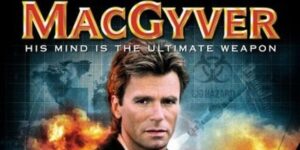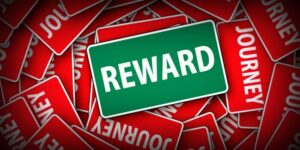
Showing Workplace Competition Who’s Boss
Competition in the workplace is unavoidable. How do you make the most of it, without letting it get the best of you?

Competition in the workplace is unavoidable. How do you make the most of it, without letting it get the best of you?

Evidence shows that we don’t need to be super-human to be ingenious. We just have to be willing to try. Here’s what the TalentCulture community thinks…

Research confirms that employees are suffering at the hands of poor managers — and business performance is right behind. How can companies turn this around?

Customer and employee engagement are similar in many ways. Here’s how customer experience disconnects can inspire better employee communications…

What does a future-ready workforce look like? Business collaboration and learning expert Dan Pontefract says it features a special kind of leader

Small-company culture can be highly attractive to top talent. So, what can large companies do level the playing field? Try these 5 steps…

How can organizations engage employees more constructively? Start with the basics — 3 essential ways to build stronger connections

When designing an organizational workspace, it’s essential to think from the “inside” out. Why? Thoughts from an employee recognition expert…

What do some of the world’s most respected companies do to recognize employee performance — and why? Take a quick tour and get inspired!

How does workspace design affect workforce engagement and organizational performance? See what our talent-minded “world of work” community says…

World-class employers work overtime to create an environment that attracts new talent and keeps existing employees on board. What can the rest of us learn from them? Ask yourself 4 questions…
By definition, learning is a social function. How can business leverage this more fully to develop talent in the world of work? This week, we dug deep to explore the possibilities…
To succeed in today’s social business world, professionals must apply learning techniques to help focus on what matters most. It starts with a skill called “engagement-performance transformation.” Let’s break it down…
What does it mean to apply emerging social tools and techniques to the process of continuous learning? And why does it matter for individual professionals and the organizations we serve? Let’s talk about it!
How can organization’s leverage human capital management practices and technologies in today’s world of work? Enterprise talent expert Josh Bersin helped us look look closer at this issue…
When organizations make learning a cultural imperative, it can lead to a sustainable business advantage. But that’s easier said than done. Talent management expert Josh Bersin leads the #TChat conversation this week…
Collaboration – sounds good in theory, but hard to achieve in practice. Understanding human nature can help us tap into the best of collaborative techniques in the workplace. That was our goal this week…
We see examples of poor teamwork all around us. What’s at stake when business professionals fail to collaborate effectively? And how can we get on the right track? That’s the theme for #TChat this week…
Where does innovation begin? What characteristics of workplace culture allow viable ideas to emerge, take root and grow? That’s the focus at TalentCulture forums this week…
Feedback is essential for professional assessment, coaching and development. But what forms of recognition matter most – and how can leaders make recognition a more effective tool to improve performance?
As a flood of recent veterans return from tours of duty in Iraq and Afghanistan, they bring specialized skills, professionalism and commitment to the workforce. So why are employers slow to hire those who’ve served in the military? What should recruiters and business leaders do to dispel myths and leverage this strong talent pool?
Working at the speed of business – what exactly IS the speed limit, anyway? The TalentCulture community takes on this question at #TChat this week…
What qualities are essential in an effective leader? That’s the topic we’ll explore at this week’s #TChat forum – focusing on a great new business book, “The Character Based Leader” …
Why is lifelong learning so critical to professional success? And how can individuals and businesses harness it more effectively at any age – in an era of social technologies? The TalentCulture community weighs in on #TChat Twitter…
Long before the digital age arrived, with its unrelenting firehose of disruptive technologies, the terms “social”, “learning” and “business” made sense within the same sentence. Today’s workplace just exposes the relationship more than ever. But how can organizations make the most of new-school learning possibilities?